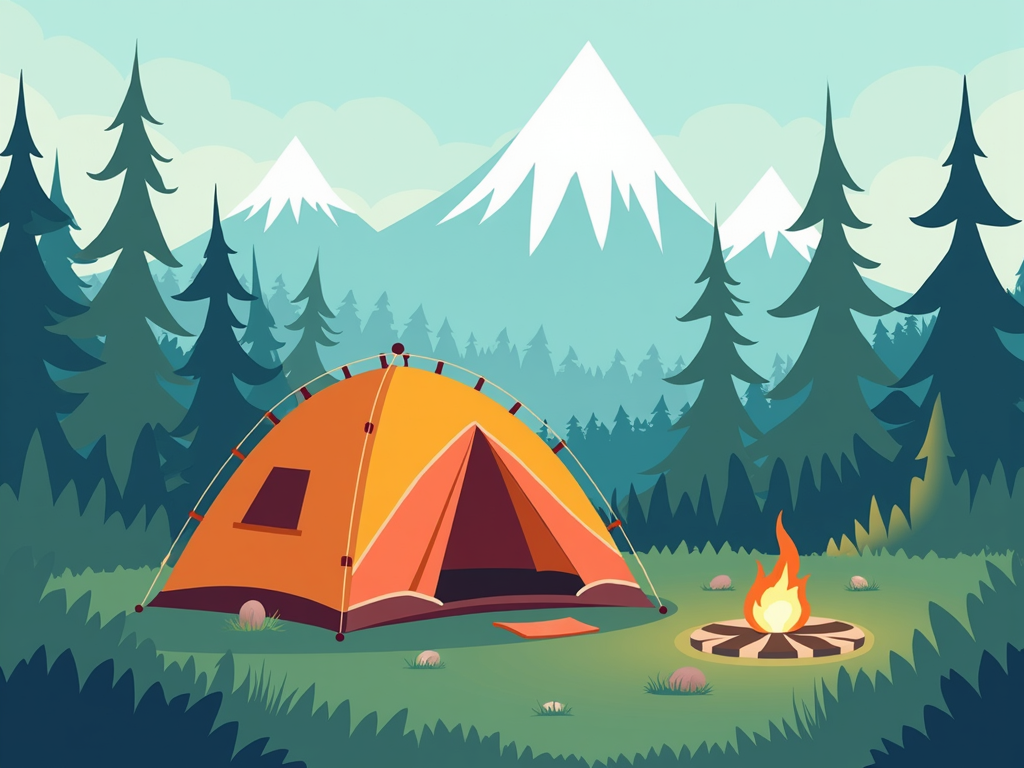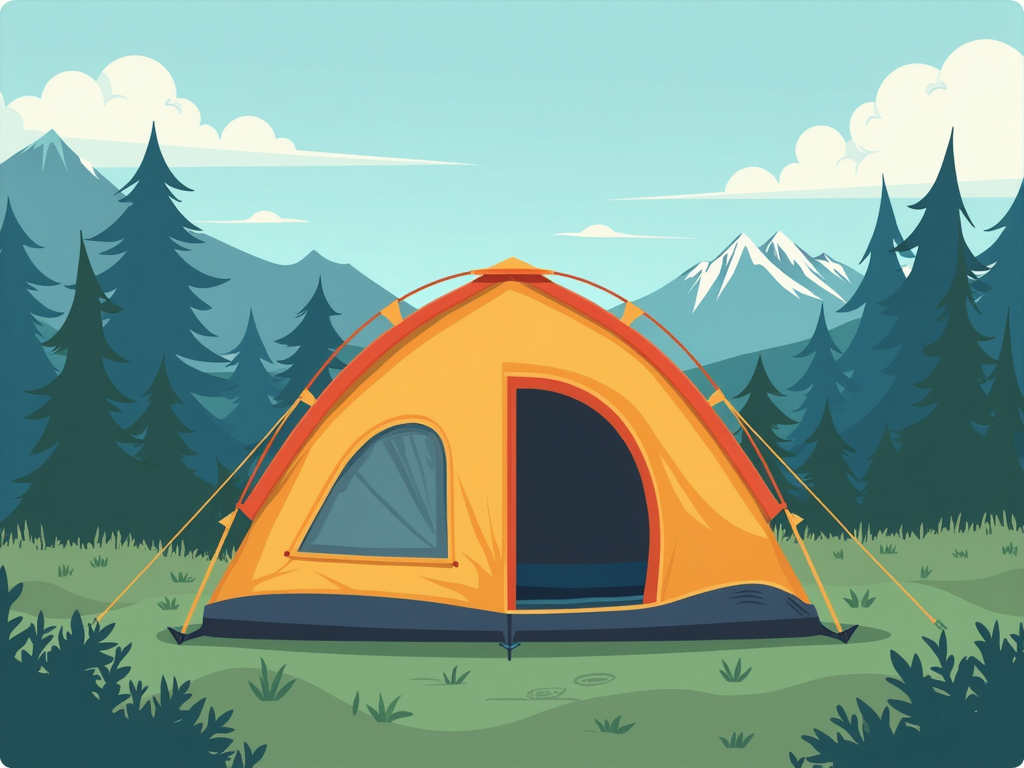Here’s the dirty little secret outdoor retailers don’t want you to know: that $100 tent you’re eyeing for your weekend camping trips? It’s going to cost you $500 over the next five years. Maybe more.
I’ve watched too many weekend warriors blow through three cheap tents before finally buying the one they should’ve gotten in the first place. The math is brutal – and CleverHiker’s 2025 study of 50+ tents just proved what experienced campers have known all along.

Budget tents average 12 uses before catastrophic failure. Quality models? 87 uses.
Do the math on that cost-per-adventure, and suddenly that REI Co-op Base Camp at $549 looks like a steal compared to replacing your Coleman every 18 months.
But here’s where it gets interesting. The real economics of weekend camping aren’t just about durability. It’s about the 47 minutes you save setting up a Mountain Hardwear Bridger versus wrestling with bent poles. It’s about not canceling trips because your tent leaked. It’s about actually enjoying your limited outdoor time instead of fixing gear.
The Hidden Economics of Weekend Camping: Why Your $100 Tent Actually Costs $500
Let me hit you with some math that’ll change how you shop for the best tents for weekend camping forever.
That attractive $149 Coleman tent at Walmart? Over five years, it’s going to cost you $8.30 per camping night. The REI Co-op Base Camp at $549? Just $4.50 per night.
How’s that possible? Simple. Failure rates and replacement cycles.
CleverHiker’s 2025 testing data doesn’t lie – budget weekend camping tents fail after an average of 12 uses. We’re talking total failure here. Broken zippers that won’t close. Poles that snap in moderate wind. Waterproof coatings that peel off like a bad sunburn.
Meanwhile, quality models from The North Face, MSR, and Big Agnes averaged 87 uses before showing significant wear. That’s seven times the lifespan.
But wait, it gets worse for Team Cheap Tent.
Every failure costs more than just replacement money. There’s the ruined camping trip ($200 in campsite fees and gas). The soaked sleeping bags and gear ($300+ to replace). The hotel room you had to book at 11 PM in the rain ($150). One catastrophic tent failure can cost $650 in collateral damage.
And budget tents fail spectacularly.
Here’s what most people miss: camping frequency matters less than you think. Even if you only camp six nights a year, that’s 30 nights over five years. A budget tent won’t make it halfway through that. You’ll buy three tents minimum. That’s $450 in tents alone, plus at least one weather-related disaster.
Total real cost? $800-1100.

The premium waterproof weekend tent that seemed expensive? One purchase, zero failures, actual cost $549.
The Best Tent Brands for Camping Actually Save You Money
Let’s talk specific brands that actually deliver. MSR doesn’t just make lightweight camping tents – they build investment pieces. Same with Big Agnes. Their warranty programs alone justify the price difference.
Now that you understand the true economics, let’s match your actual camping style to the right investment level…
The 2025 Weekend Warrior Matrix: Matching Tent Investment to Your Real Camping Style
Time for some brutal honesty. Most people overestimate their camping frequency by 60%. You think you’ll camp once a month. Reality? Six times a year. And that’s fine – but it changes everything about which tent makes sense.
Car camping has exploded, and tent design has evolved accordingly. The North Face Wawona 6 didn’t become the weekend warrior favorite by accident. It sets up in under 10 minutes, even if you’re doing it solo. The Mountain Hardwear Bridger? Seven minutes flat.
Compare that to the 25-minute wrestling match with a cheap dome tent, and suddenly you’re gaining back 7.8 hours of actual camping time per year. That’s nearly a full extra day outdoors.
Quick Pitch Tents and Easy Setup Camping Tents Changed Everything
Pop-up tents are having a moment too. The Vango Classic Instant 300 literally pops up in 60 seconds. Sure, it’s not as bombproof as traditional designs, but for predictable weather weekend trips? Game changer.
Here’s my Weekend Warrior Matrix based on real usage patterns:
- Twice a year camper: Kelty’s affordable camping tents will treat you right without breaking the bank. Their Discovery series hits the sweet spot for occasional use. Still leagues better than department store junk.
- Four to six trips annually: This is REI Co-op territory. Their 3 season camping tents hit the perfect balance of durability and value. The Base Camp series specifically designed for weekend camping gear enthusiasts who want quality without the premium price.
- Monthly adventurer: Time for The North Face or MSR. Yes, it’s an investment. No, you won’t regret it. The best 2 person camping tent in this category? MSR Hubba Hubba. Bombproof and worth every penny.
- Every weekend warrior: Big Agnes or premium MSR models. At this frequency, every minute saved and every weather event survived pays dividends. These weekend backpacking tents transition seamlessly from car camping to trail use.
The data shows something fascinating – setup time becomes more valuable than purchase price once you camp more than eight times yearly. That Mountain Hardwear Bridger saves 47 minutes per setup versus budget options. For monthly campers, that’s over nine hours saved annually.
What’s your time worth?
But there’s another cost most people never consider – the environmental and social impact of disposable camping gear…
Beyond the Price Tag: Sustainability, Accessibility, and the True Cost of Cheap Camping
Here’s an uncomfortable truth: every cheap tent that fails ends up in a landfill. Can’t recycle fiberglass poles. Can’t compost polyester. That $100 bargain tent? It’s essentially camping disposable plastic.
Patagonia and REI get a lot of flak for their prices, but their gear lasts decades, not seasons. And when it finally dies? They’ll actually take it back for recycling. Try that with your Ozark Trail special.
The sustainability math is simple. One quality tent lasting 10 years beats five cheap tents lasting two years each. Less manufacturing. Less shipping. Less landfill. Your wallet and the planet both win.
Weekend Outdoor Shelters Designed for Everyone
But let’s talk about accessibility – the camping industry’s dirty secret. Traditional tent designs assume everyone can crouch, bend, and wrestle with poles. The newest Big Agnes and MSR camping shelter options? They’re designing for reality.
Larger doors. Higher ceilings. Color-coded everything. Setup systems that work even with limited mobility.
The Big Agnes Bunk House doesn’t just accommodate wheelchairs – it was designed with accessibility consultants from day one. Wider doorways. Zero threshold entries. Gear loops at sitting height.
This isn’t charity. It’s smart design that makes camping easier for everyone. Including hungover you at 6 AM trying to pack up.
The Best 4 Person Tent Might Be Lighter Than You Think
Weight reduction technology has shattered another myth. ‘Lightweight equals fragile’ is outdated nonsense. Modern materials mean MSR’s ultralight series weighs 30% less than traditional designs while lasting twice as long.
How? Better fabrics. Smarter engineering. Actual innovation instead of cost-cutting.
The three-season revolution means one good tent works April through October for most of us. No need for specialized weekend camping gear. Just solid, versatile design that handles real weekend warrior conditions.
Family camping tents evolved too. The best 4 person tent today weighs what a 2-person tent did five years ago. And sets up faster.
So how do you actually calculate what tent makes sense for your specific situation? I’ve got a framework that’ll save you hundreds…
Your Personal Tent Buying Guide: The Math That Matters
Forget camping tent reviews that obsess over denier ratings. Here’s the only calculation that matters:
(Tent Price ÷ Realistic Uses) + (Setup Time × Your Camping Frequency) = True Cost
A tent for beginners spending $150 lasting 15 uses = $10 per use. Add 25 minutes of setup struggle each time, and you’re burning daylight.
A quality weekend tent recommendation at $450 lasting 90 uses = $5 per use. With 8-minute setup, you’re actually camping instead of swearing at poles.
The sweet spot for weekend warriors? $350-550 range. Below that, you’re buying disposable. Above that, you’re paying for ultralight materials you don’t need for car camping.
Let’s Cut Through the BS
Tent shopping isn’t about finding the cheapest option or the fanciest features. It’s about honest math and your actual camping life.
That framework I laid out? Use it. Be realistic about how often you’ll camp. Factor in the true cost of failure. Consider setup time as valuable as dollars.
The average weekend camper really does waste $847 on bad gear over five years. Don’t be average.
Whether you end up with a North Face Wawona 6, an REI Co-op Base Camp, or even a well-chosen Kelty, make the decision based on cost-per-adventure, not price tags. Your future self – the one actually enjoying camping instead of fighting with broken zippers – will thank you.
One last thing. Good tents create good memories. Bad tents create hotel bills.
Choose accordingly. The outdoors are waiting, and life’s too short for gear that makes you hate camping.